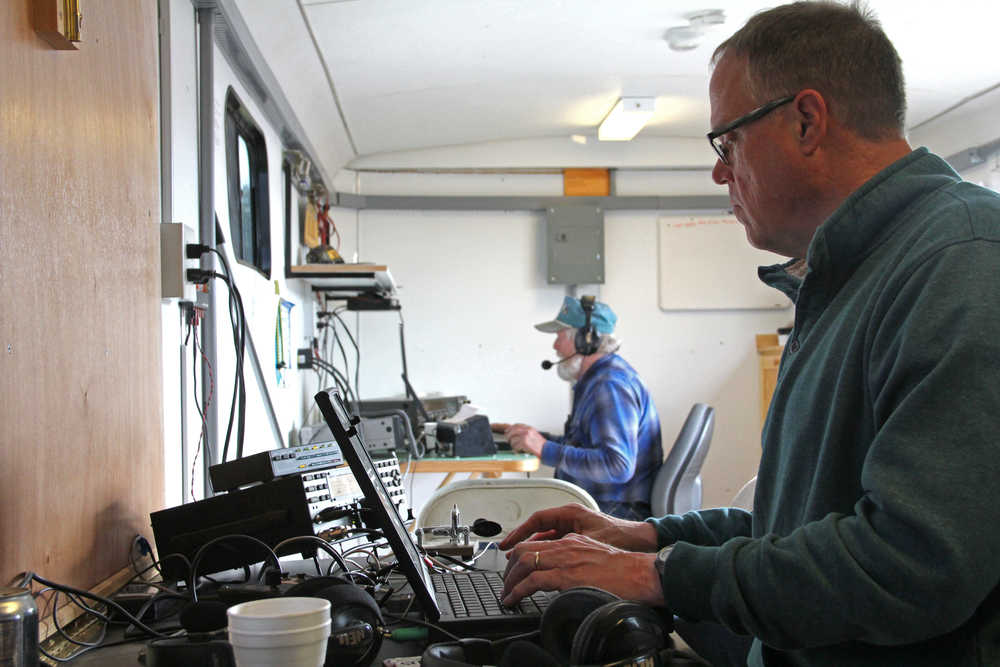At 9 a.m. on Sunday it was time to pack up.
The Moosehorn Amateur Radio Club successfully completed another “Field Day” — 24 hours and hundreds of connections with other amateur or ham radio operators.
The club also gave license exams to six people interested in becoming operators on Saturday at the Skyview High School parking lot. A written test on the rules and technology is required to become a licensed ham operator. There are three levels of operators — technician, general and extra.
Ted Johnson has been a ham for about a year and a half and hopes to move up to a general license soon. As a kid, he said he knew about ham radio, but until recently he didn’t have the time or interest to get licensed.
John Pfeifer, who has an extra class license, said he thinks elimination of the Morse code requirement and the integration of computers, has helped to increase interest in the hobby in recent years.
“Lots of things are happening now in ham radio now that I think are broadening the interest a little bit so that people who are more computer oriented now are sort of becoming interested,” Pfeifer said.
Along with the technical and emergency aspects of ham operations, Johnson said it’s also a social hobby.
The Moosehorn club, which has 30-40 members, helped The South Peninsula Amateur Radio Club reform this year by administering licensing exams to about 15 people in Homer.
Pfeifer has been an operator since he was 16 years old. A neighbor down the street from his home was an operator.
“I saw his antennas in the backyard and I wondered what was going on with that,” he said.
While the setup at Skyview included a trailer, generators and antennas, Pfeifer said new hams can get started on a hand-held radio for about $50.
The club operated on three stations during the weekend and established connections in Morse code and by voice with 400-500 hams across the nation and in other countries, Pfeifer said.
The America Radio Relay League sponsors the annual “Field Day” for hams to establish connections and exercise operations. Pfeifer said it’s a big event for the Moorsehorn club and allows the members to practice and make sure they’re ready for emergency situations.
With a trailer, generators and portable antennas, the Moosehorn club can set up pretty much anywhere and operate without commercial power to communicate, Pfeifer said.
Pfeifer said some of the hams of Moosehorn relayed messages to the Lower 48 during the Great Alaska Earthquake in 1964. While communication has advanced since then with cell phones and the Internet, if towers go down due to a disaster ham operators are prepared to get messages through.
“When you lose everything, sometimes the only thing that’s left is ham radio,” Pfeifer said.
For more information about the Moosehorn club and its monthly meetings, visit moosehornarc.com. Pfeifer said people interested in becoming operators should find a ham to mentor them.
“We always try to help each other out,” he said.
Kaylee Osowski can be reached at kaylee.osowski@peninsulaclarion.com.

